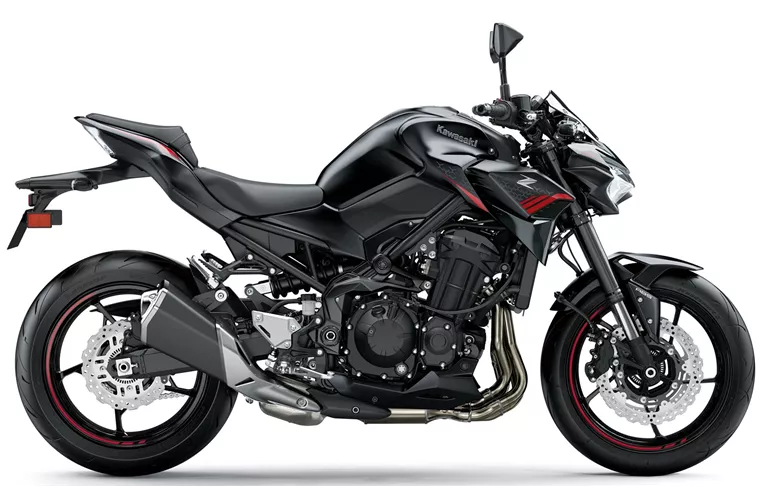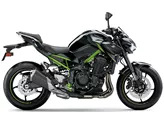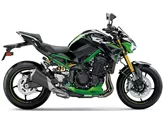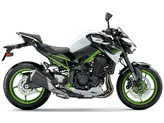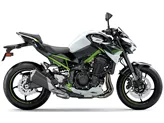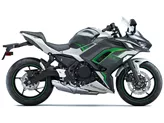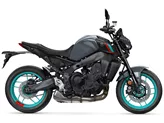Kawasaki Z900 2019 vs. Kawasaki Z900 70kW 2020

Kawasaki Z900 2019
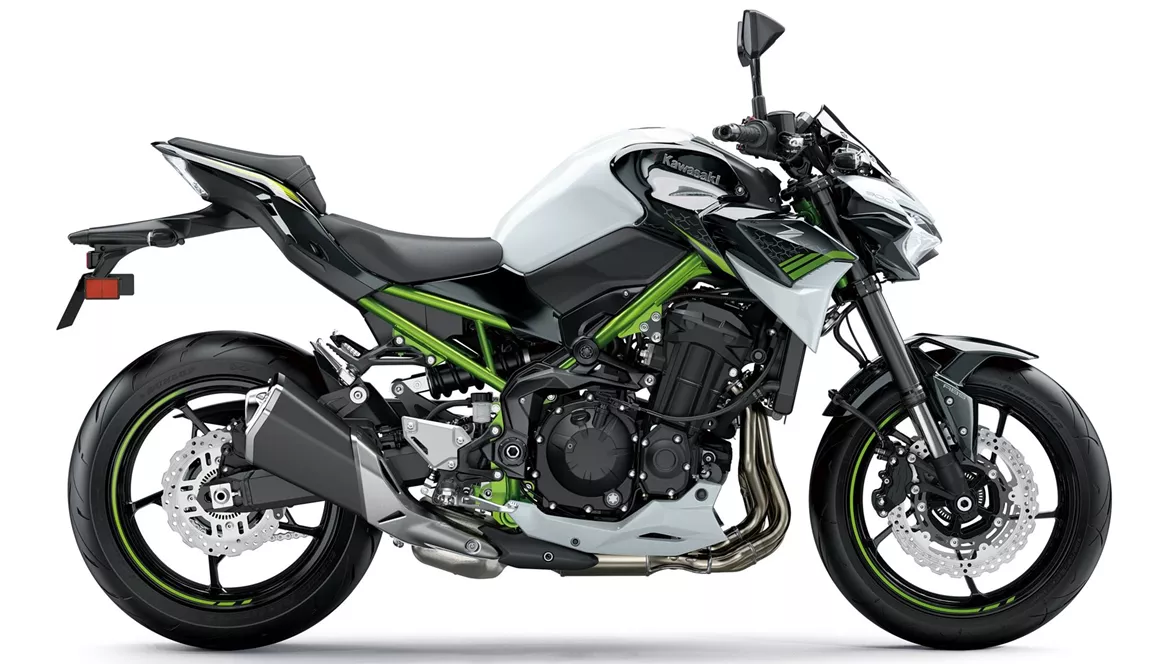
Kawasaki Z900 70kW 2020
Overview - Kawasaki Z900 2019 vs Kawasaki Z900 70kW 2020
The Kawasaki Z900 2019 and the Kawasaki Z900 70kW 2020 are both naked bikes with similar technical specifications. They both have an inline engine with a displacement of 948ccm and liquid cooling. The 2019 model has an engine power of 125.4 HP and a torque of 98.6 Nm, while the 2020 model has a slightly lower engine power of 95 HP and a torque of 91.2 Nm. Both models have a fuel injection system and four cylinders.
In terms of suspension, both bikes have upside-down telescopic forks at the front and a swing arm with a monoshock at the rear. The suspension can be adjusted for preload and rebound. The rear suspension is made of aluminum. The frame of both bikes is made of steel and has a double cradle design.
Both models have double disk brakes with a diameter of 300mm at the front, equipped with four pistons. The front brakes use petal technology. Both bikes also have ABS as an advanced rider assistance system.

Kawasaki Z900 2019
In terms of dimensions and weights, both models have a front tire width of 120mm and a diameter of 17 inches. The rear tire width is 180mm and also has a diameter of 17 inches. The wheelbase is 1450mm and the seat height is 795mm. The kerb weight, including ABS, is 210kg for both models.
Now let's compare the strengths and weaknesses of each model. The Kawasaki Z900 2019 is praised for its light and natural handling, offering high stability. The engine is described as silky, providing a full pull from mid revs. The chassis transparency is high, providing great feedback to the rider. The sitting position is comfortable and has a feel-good factor. Additionally, the price is considered fair.
On the other hand, the Kawasaki Z900 2019 has some weaknesses. The TFT display is mounted too low, making it less convenient to read. The menu operation is cumbersome, which can be tiring for the rider. The rearview mirrors offer modest visibility, which can be a drawback in terms of safety.
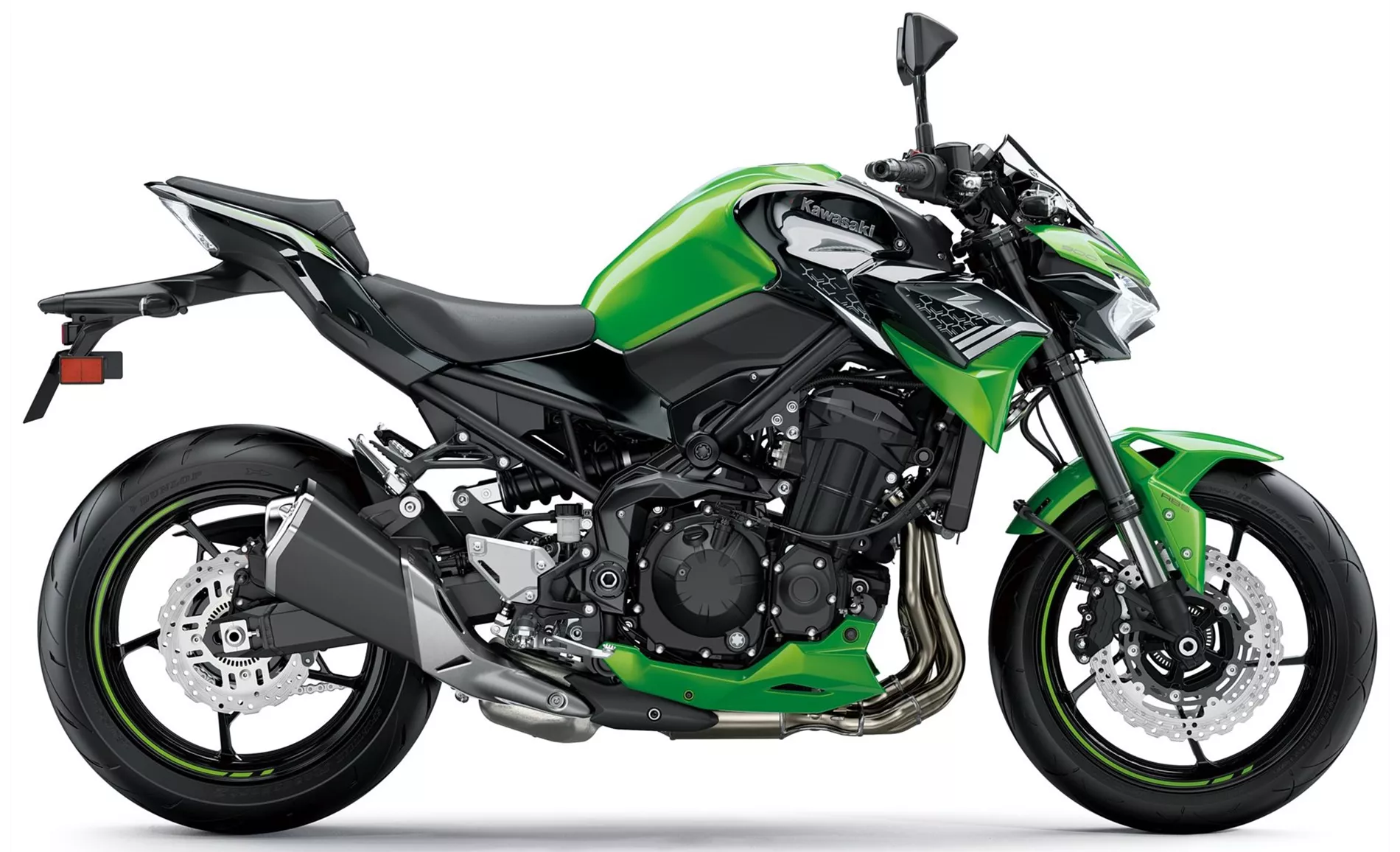
Kawasaki Z900 70kW 2020
Moving on to the Kawasaki Z900 70kW 2020, its strengths include enough power, even with throttle, and great handling. The bike is also praised for its good equipment and aggressive look. Additionally, it is considered to provide value for money.
However, the 2020 model also has some weaknesses. The menu navigation is somewhat tiring, similar to the 2019 model. Additionally, the quickshifter option is missing, which could be a drawback for riders who prefer this feature.
In conclusion, both the Kawasaki Z900 2019 and the Kawasaki Z900 70kW 2020 have similar technical specifications with some minor differences in engine power and torque. The 2019 model is praised for its light and natural handling, while the 2020 model is praised for its power and aggressive look. Both models have their strengths and weaknesses, but overall, they offer a good riding experience with value for money.
Technical Specifications Kawasaki Z900 2019 compared to Kawasaki Z900 70kW 2020
Pros and Cons in comparison
Pros and Cons in comparison
Kawasaki Z900 2019

Fortunately, the new Kawasaki Z900 has lost none of its character through the use of electronics. It is and remains a playful mid-range naked bike, which at the same time masters the brisk pace on the country road magnificently. The riding pleasure and suitability for everyday use are high, the now installed riding aids offer a plus in safety. Your opponents will have a really hard time from now on.
Kawasaki Z900 70kW 2020
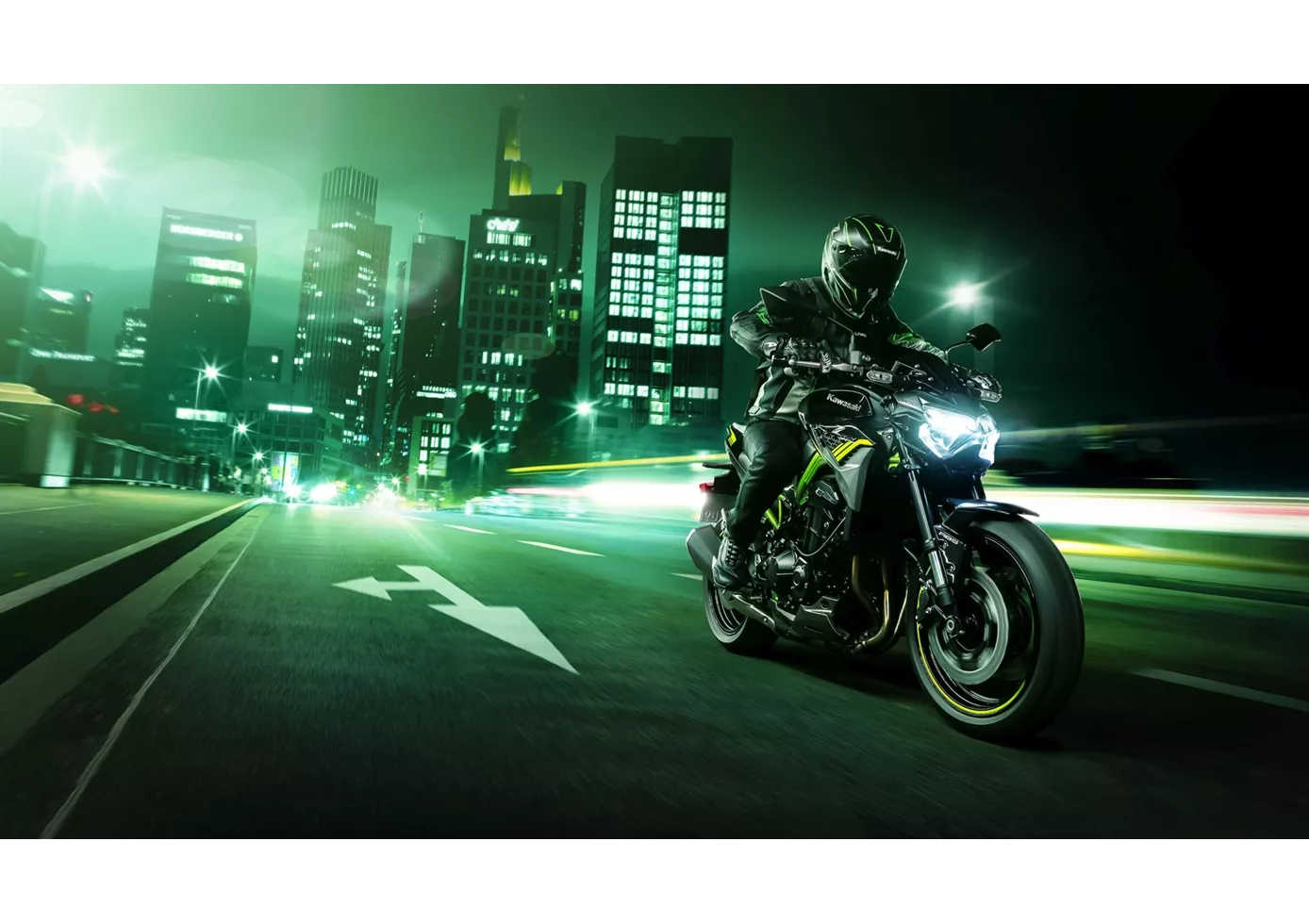
Whether you ride it with 70 kW, or in a further throttled 35 kW version: The Kawasaki Z900 is on a par with its open version - just with less power. That's why you can also be happy about the great handling and the updated electronics package for 2020. There's also good news about the engine. Even with 95 hp, the Kawa pulls tight on the chain and will give pleasure for many seasons! A bike you can grow with!
Price Comparison Avarage Market Price Kawasaki Z900 vs Kawasaki Z900 70kW
There are a few key differences between a Kawasaki Z900 2019 and a Kawasaki Z900 70kW 2020. In terms of price, the actual average price of a Kawasaki Z900 2019 is about 8% higher. Compared to Kawasaki Z900 70kW 2020 there are more Kawasaki Z900 2019 bikes available on the 1000PS.de Marketplace, specifically 40 compared to 5. It takes less time to sell a Kawasaki Z900 with 116 days compared to 197 days for a Kawasaki Z900 70kW. Since model year 2017 1000PS.de editors have written 46 reviews for the Kawasaki Z900 and 10 reviews for the Kawasaki Z900 70kW since model year 2018. The first review for the Kawasaki Z900 was published on 11/11/2016 and now has more than 93,200 views. This compares to more than 104,300 views for the first review on Kawasaki Z900 70kW published on 23/11/2018.

